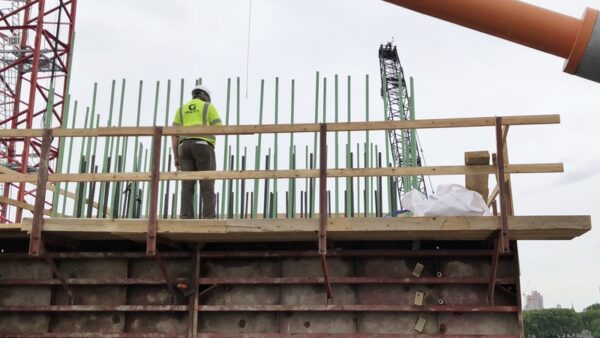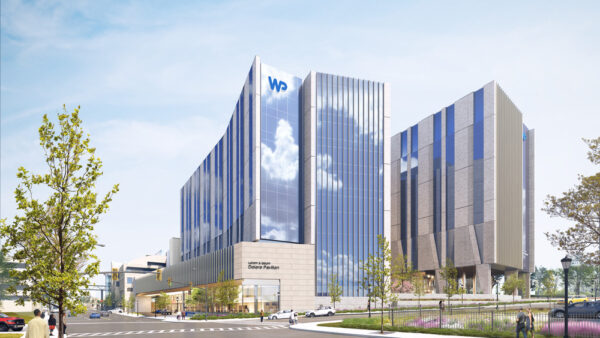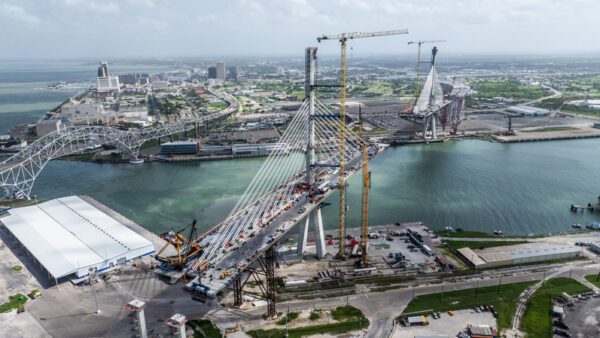Balfour Beatty, the UK’s largest contractor, has predicted that the building process will be largely carried out by smart machines within the next 33 years.
The company makes its prediction in a paper called “Innovation 2050: A Digital Future for Infrastructure”.
According to Balfour, by 2050 much of construction will take place in offsite factories, modular elements will be able to put themselves together and much of the physical work will be carried out by connected robots that are either autonomous or remotely controlled.

It adds that the few people who are present on site will wear robotically enhanced exoskeletons, but most workers will manage multiple projects by accessing 3D and 4D visuals and data in remote control rooms.
Balfour also predicts that surveys and supervision will be carried out using images sent by drones to onsite machinery, and this will help cranes, diggers and automated builders to “solve problems before they arise”.
Many of these trends are also visible in other industries, where they tend to come under the heading of “the fourth industrial revolution”, or “Industry 4.0”. In oil and gas, for example, research is being undertaken to develop autonomous oil production facilities that are located on the sea bed rather than on fixed or floating platforms, and are overseen from onshore control rooms.

Balfour’s 10 predictions for 2050 are:
- The industry will become increasingly focused on innovation and both contractors and customers will become less risk-averse
- The infrastructure industry will adopt new business models, products and services
- Infrastructure will use new materials that “respond to their surroundings”
- New jobs and industries will be created, and low-skilled labouring roles will disappear
- Thinking only about design and construction will become an outdated concept as infrastructure becomes multi-functional
- Robots will become more prevalent
- Construction make more use of 3D printing and self-transforming, self-assembling objects
- Disruptive ideas will emerge for making mass transit faster safer and less damaging to the environment
- We will increasingly use wearable technology such as exoskeletons
- Direct neural control over devices and vehicles will be accessible to the industry.
Leo Quinn, Balfour’s chief executive, said, “We’re experiencing a digital revolution, redefining how we as an industry operate; becoming faster, better and more agile.
“By adopting and embracing the rise of digital solutions we are more able to deliver efficient, effective and safer solutions to our clients and customers.
“Balfour Beatty has made significant progress in its vision to become a truly digitally empowered business, developing our internal capabilities, collaborating across our supply chain and partnering with the best technologically creative minds enabling us to be bold in the adoption of new and emerging technologies.”
The paper can be downloaded here.
Images courtesy of Balfour Beatty
Comments
Comments are closed.







I welcome our new Construction Robot overlords !